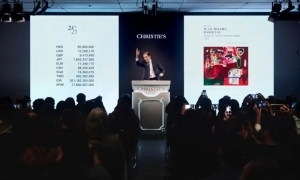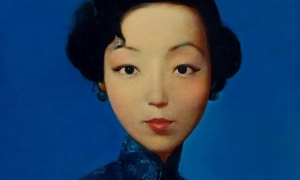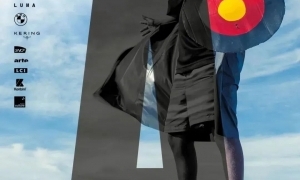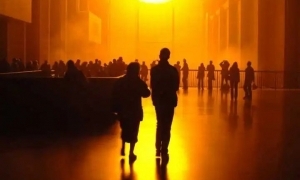首先感谢丽迪亚女士和世界文化宫的邀请,使我能有机会来这里介绍我的新作品,这是一个研究了好几年的项目,它包括近六十年以来中国历史上那些最重要的图片,以及大量的普通图片,有些图片发表了无数次,我们都非常熟悉。但有些只发表过一次。也许普通人无法知道:在这些非常熟悉的图片背后,还有另外一个版本,或者是另外两个版本,更或者有些图片它根本就不存在,是再创造。当然那些经过加工的图片,有些最终也无法找到最原始的版本,因为是在底片上直接加工的。
我们知道人类的历史有一部分是由想象构成的。为了和那些躺在档案袋中的原始历史相区分,这些被修改和再创造的、我们所熟悉的图片应是一种第二历史,第二历史我认为也是历史的一部分,它就如同本体的影子,在光源的照射下可长可短,可虚可实,甚至可以因为光源的奇妙变化而让人们拒绝承认本体的主导地位,影子使给它提供存在的母体显得丑陋。因此人们会自然的去修改那些他们认为不美的,又必须接触和可视的一切物体。
这些图片只不过是可视物体的一部分,它反映了当时人们的心态、以及主观愿望和美学观,当你仔细的欣赏和凝视这些图片时,你会感觉到人们对每一张图片的苦心经营,你能摸到历史的脉搏,感觉到他们心脏的跳动。
我大致的总结了一下这些图片的几个特点:1,政治目的,这是一种非常典型的形式,在这种状态下修改的图片,大都是执行任务或是不承担责任。他们会随着时代的改变及政治人物的起伏而反复变化,象有彭德怀、刘少奇、林彪的图片,知道中国历史的人会了解这些人物的背景;2,被美学所支配的修改和创造,这种情况是将主要人物突出,巫鸿先生称之为“升华”,由于主人不在画面的中心位置,或背景杂乱等等,这种修改使图片更加符合于当时的美学观念;3,心理作用下的自动修复,这有点像电脑软件在有些情况下会自动的修复某一文件的碎片,修改图片的人大都是工厂的印刷及上色工人,专业术语叫“修版”;4,主动创造和虚构一个主观的场面,这差不多是一种绘画式的创造,把不存在的、但需要表达的主题,通过不同的图片剪裁和拼接,从而创造出一个理想的画面,它反映了时代的要求。
这些图片我以档案的形式展示出来以飨对此有兴趣的读者,我私下里认为这是我们的历史里极其重要的一部分,因为在这近六十年的时间里,它们差不多一直指导我们的生活、学习、工作以及家庭观念,因为它们的存在,由此创造和发明了脱离于本体的另一种历史,那么它们的存在就是第二历史。
张大力
2006年3月24日
Speech presented in Berlin at the Haus der Kulturen der Welt
Zhang Dali
I would like to first express my sincere gratitude and appreciation to Dr. Lydia Haustein and the Haus der Kulturen der Welt for giving me this opportunity to introduce my new work, a project that I have researched for many years. This project includes some of the most vital and recognizable photographs from the past sixty years of Chinese history, as well as many more commonplace pictures. Some of these photographs have been displayed countless times—those with which we have become intimately familiar—while others have been exhibited only once. Perhaps the general population has no way of knowing that hidden behind even the most familiar photographs, there lies another version, or perhaps even two versions. It could even be the case that some of the photographs don’t even exist, but rather are complete fabrications. In some instances, it is impossible to locate the original version because the negatives themselves have been doctored.
We know that human history is, in part, formed from the imagination. These photographs were altered and fabricated in order to be distinguished from those lying in historical archives. They constitute a secondary mode of history. This secondary mode is still a component of history, but appears like a shadow: beneath the light, it can be elongated or condensed, real or imaginary, and due to remarkable changes under the light can cause people to refuse to recognize the primary position of the original thing. The shadow reveals the ugliness of the original. Thus, people will naturally fix what they consider ugly, and touch those objects that are visible to them.
These images are only one portion of what is visible. They reflect contemporary people’s viewpoints, as well as subjective desires and aesthetic considerations. When carefully observing these photographs, one can sense the painstaking efforts that went into each image…one can feel the beating pulse of history.
I will broadly outline a few of the notable characteristics of these images. First, doctored photographs are one of the typical forms for displaying political objectives. They can serve as a means of executing specific tasks or avoiding blame. They follow the historical vicissitudes of that period, as well as the rise and fall of political figures. For example, people who are familiar with Chinese history will understand the background behind photographs of Peng Dehuai, Liu Shaoqi, and Lin Biao. Second, some images were manipulated for aesthetic purposes—namely by emphasizing an important figure—a process that Wu Hung has termed “sublimation.” This was achieved by giving the figure a central position in the picture plane, removing clutter in the background, etc. Third, some of these photographs evidence a psychological compulsion to repair, like word processors automatically correcting mistakes. The people responsible for this were mostly factory workers, whose jobs entailed printing and retouching photographs. Fourth, some images were completely fabricated in order to create a particular scene. This borders on a painterly approach, wherein non-existent elements are added in order to depict a necessary idea. Through the cutting and reassembling of different photographs, an ideal image can be achieved. Such a photograph reflects the needs of that era.
I have displayed these photographs as records for interested viewers to study. I consider these photographs to be a critical part of our history. In these past sixty years, they have guided our lives, studies, work, and family values. Because of their existence, a separate history has been produced and cultivated: a secondary mode of history.
March 24, 2006
Translated by Peggy Wang
【编辑:霍春常】

























